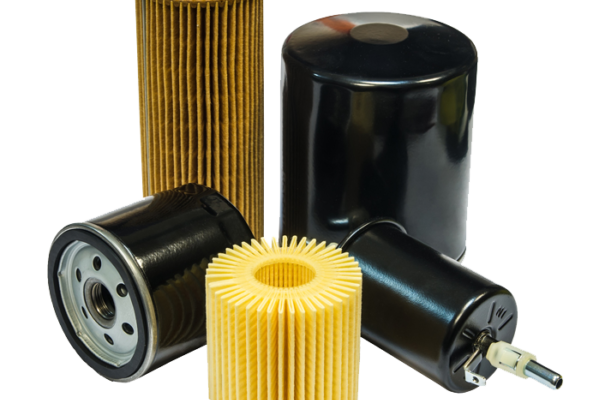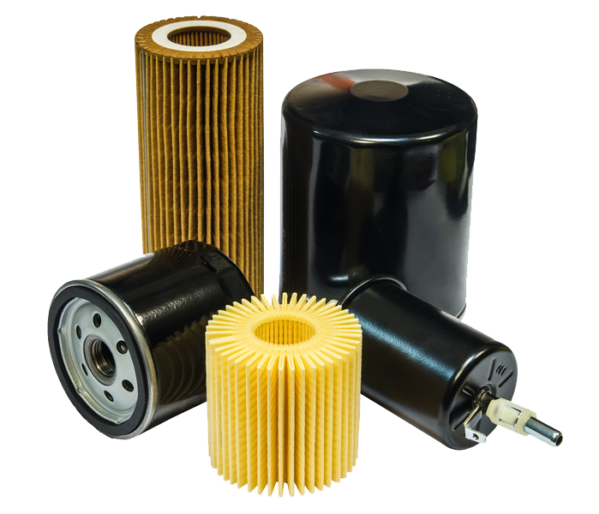
An inspection of an used oil filter can be quite helpful to determine the condition of the engine. By dissecting a filter, you can discover information about the quality of the filter itself by checking for collapsed media, bad seals or weak points that may have formed in the filter media during use. You may also learn a lot about the health of the engine by analysing the debris caught in the filter.
The purpose of the oil filter is to trap contaminants suspended in the engine oil as it flows through the filter. This is accomplished by the filter medium inside the filter body. The medium typically allows the passage of very small particles (less than 5 microns) but traps the larger ones (greater than 5 microns). These are the ones you will find inside a filter when it is dissected.
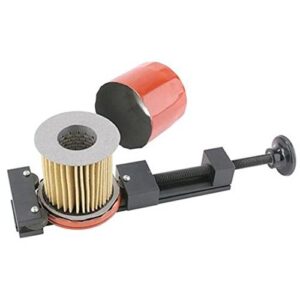
If the filter is of the canister type, a simple and inexpensive method is to cut the filter housing open to remove the media. There are special tools available to do so. A typical example is shown on the right. Do not use a hacksaw since the metal shavings could be mistaken for wear metals. Once open, slice the filter media away from the centre tube with a sharp knife or razor blade. Lay the media out onto a clean surface and spread the pleats apart to look for any contaminants.
Filters prevent large particles from damaging the engine, but they also mask significant component wear from regular oil analysis. Following is a discussion of what you must look for in the filter media:
Ferrous Metals
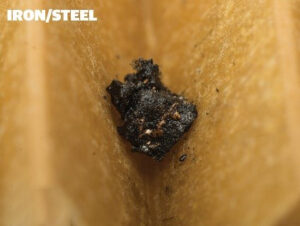
Iron and steel particles are easy to identify because they are magnetic. Simply run a magnet across the particles to verify if they are ferrous. Iron and steel debris can originate from cylinder walls, camshaft lobes or the crankshaft. Abnormal wear of these components may release pieces into the engine oil and subsequently into the oil filter. Depending on the size of the pieces and the condition of the engine, you may want to inspect the components mentioned above sooner than later.
Non-Ferrous Metals
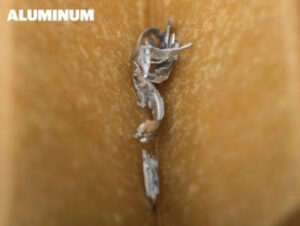 Many modern engines use lightweight aluminium components and pinpointing the origin of shiny aluminium particles in the oil filter can be difficult. One area that experiences regular wear is the piston skirt. Abnormal wear of the piston skirts is often due to contamination that has entered the combustion chamber or the use of the wrong engine oil. Checking the air intake and filter system is a good idea if you believe contamination has entered the engine.
Many modern engines use lightweight aluminium components and pinpointing the origin of shiny aluminium particles in the oil filter can be difficult. One area that experiences regular wear is the piston skirt. Abnormal wear of the piston skirts is often due to contamination that has entered the combustion chamber or the use of the wrong engine oil. Checking the air intake and filter system is a good idea if you believe contamination has entered the engine.
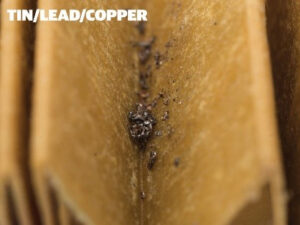 Other small, shiny particles that can be confused with aluminium are tin, lead and copper. These materials are often used in the Babbitt alloy layer of the main and piston rod small end bearings. Insufficient lubrication of these bearings can lead to premature wear of the Babbitt layer and eventually to the failure of the bearing. If remnants of tin, lead or copper are found, it would be wise to ensure that the engine is being properly lubricated with the correct oil.
Other small, shiny particles that can be confused with aluminium are tin, lead and copper. These materials are often used in the Babbitt alloy layer of the main and piston rod small end bearings. Insufficient lubrication of these bearings can lead to premature wear of the Babbitt layer and eventually to the failure of the bearing. If remnants of tin, lead or copper are found, it would be wise to ensure that the engine is being properly lubricated with the correct oil.
Non-Metallic Materials
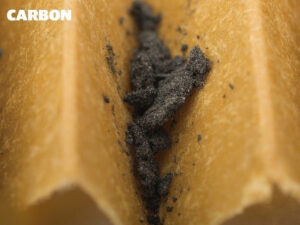 In many cases, you will find some amount of carbon, which is difficult to identify, but the use of a magnifying glass can help. When rubbing carbon between your fingertips it will feel slightly gritty but it will break apart easily. Carbon accumulation is typically a result of blow-by getting past the piston rings. If your engine suffers from excessive oil consumption and low cylinder compression readings, you most probably have worn or damaged piston rings.
In many cases, you will find some amount of carbon, which is difficult to identify, but the use of a magnifying glass can help. When rubbing carbon between your fingertips it will feel slightly gritty but it will break apart easily. Carbon accumulation is typically a result of blow-by getting past the piston rings. If your engine suffers from excessive oil consumption and low cylinder compression readings, you most probably have worn or damaged piston rings.
In many instances elements found trapped in the oil filter can point you in the right direction when attempting to diagnose an issue with an engine. Sometimes more information may be required and the filter will have to be sent to a professional laboratory for analysis. Either way the debris needs to be identified to take the necessary action to prevent possible serious engine damage.
At Q8Oils we have the people, products and proficiency to assist you with all your lubrication requirements. For more information phone 011 462 1829, email us at info@bcl.co.za or visit www.bcl.q8oils.co.za. Our lubricant experts will be happy to answer any questions you may have.

